For four fields with data in at least rJK_s, I find that the SEDs of most of the excess galaxies are consistent with them being 2--3 Gyr old early-type galaxies at the quasar redshifts of z~1.5, but that there are galaxies whose SEDs cannot be fit by such simple models. Several objects have SEDs consistent with being 4--5 Gyr old at z~1.5 and a number of others are consistent with old but dust-reddened galaxies at the quasar redshifts. These potentially different galaxy types suggest that there is considerable dispersion in the properties of early-type cluster galaxies at z~1.5. Spectroscopic followup will be needed to confirm this suggestion. In particular, age determinations from deep spectra of the candidate 4--5 Gyr old galaxies offer the possibility of constraining the cosmological model by requiring a relatively old universe at large lookback times.
There are also several dozen galaxies in the four fields with good J data (and particularly in the Q1126+101 field) whose SEDs are best explained if they are background galaxies at z>~2.5. Many of these galaxies seem to be dusty or to have composite stellar populations, or both, and some may be already >~2 Gyr old at z>~2.5. These latter galaxies may also offer the possibility of constraining the cosmological model.
Papers
For a handy reference, retreive the PASP Dissertation Abstract (PDF format, scheduled for July 1998).
- An Optical/Near-Infrared Study of Radio-Loud Quasar Environments
I. Methods and z=1--2 Observations, by Hall, Green & Cohen. 0.5M gzipped PostScript. Accepted to ApJS. - An Optical/Near-Infrared Study of Radio-Loud Quasar Environments
II. Imaging Results, by Hall & Green. 1.0M gzipped PostScript, Accepted to ApJ. Color Pictures available above, or you can retrieve individual copies of Fig. 23 in Postscript or GIF format, and Fig. 24 in Postscript or GIF format.
Data
ASCII catalogs of objects from my thesis fields are now available by contacting me."Scaled" color images
For best results, reset your browser's width so that this text falls on a single line. All Rights Reserved. Subtitled in Esperanto. Se habla Espanol.Q0835+580 (3C205) Field rJKs Scaled Color Image
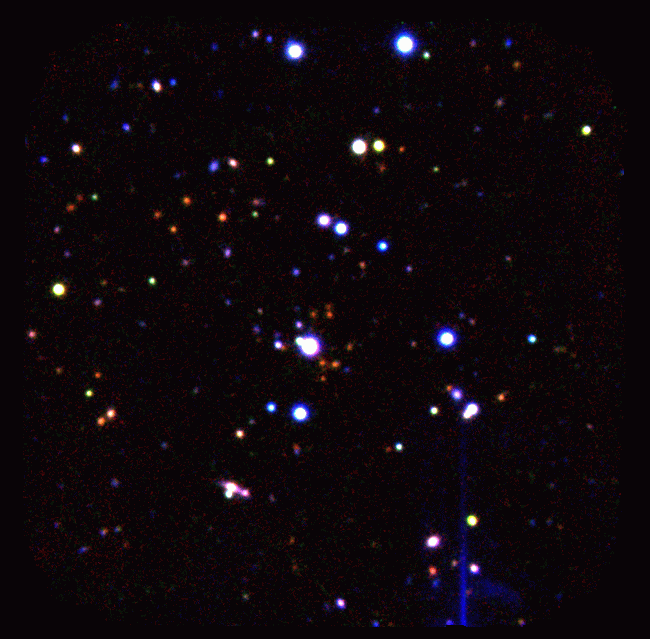
Color image of the field of Q0835+580 (z=1.534) using r, J, and Ks images to drive the blue, green and red color guns, respectively. Saturation occurs at r=24, Ks=20, and J=21 mag/arcsec^2. North is up and East is left; the area in black is approximately 3.25' by 3.25'.
Q1126+101 Field rJKs Scaled Color Image
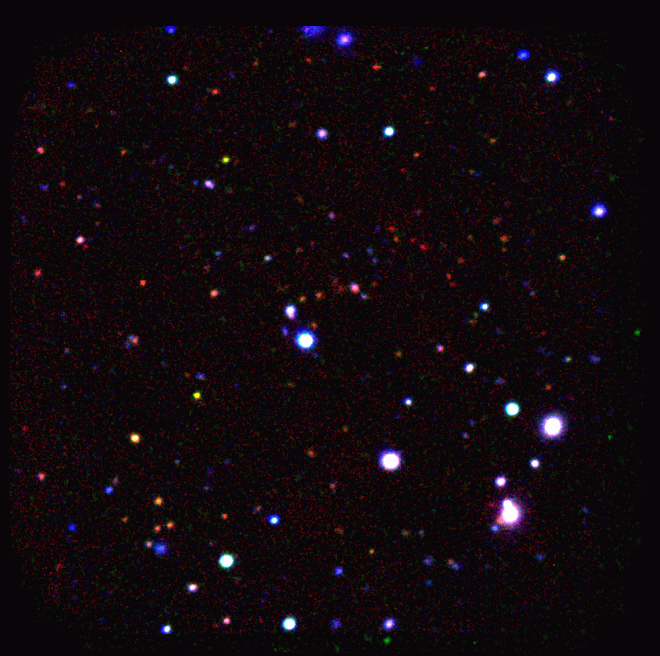
Color image of the field of Q1126+101 (z=1.516). See key to color picture of Q0835+580 for details. The area in black is approximately 3.3' by 3.3'.
Q2345+061 Field rJKs Scaled Color Image
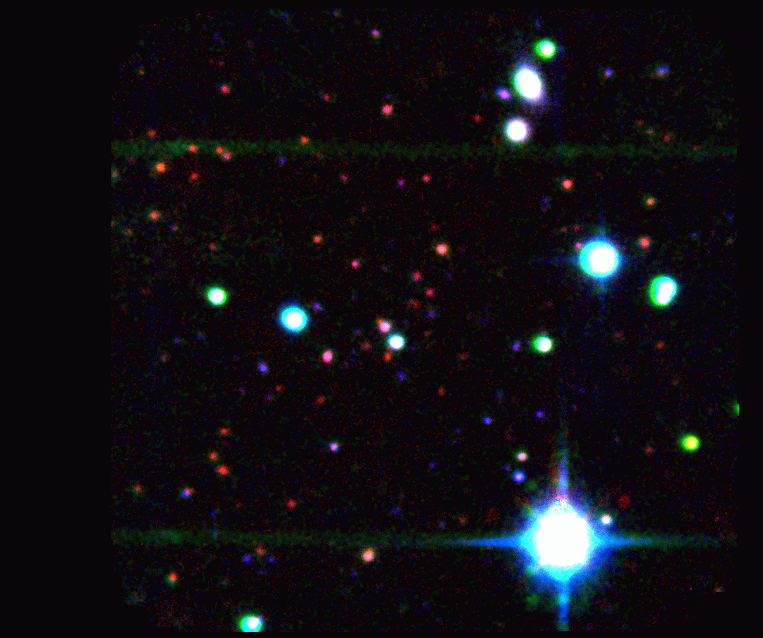
Color image of the field of Q2345+061 (z=1.540). See key to color picture of Q0835+580 for details. The area in black is approximately 3.8' by 3.2'. The J image of this field has 2.68" seeing and does not reach particularly deep, accounting for the different appearance of the colors in this picture compared to the previous two Figures.
"Faint" color images
Q0835+580 (3C205) Field rJKs Faint Color Image
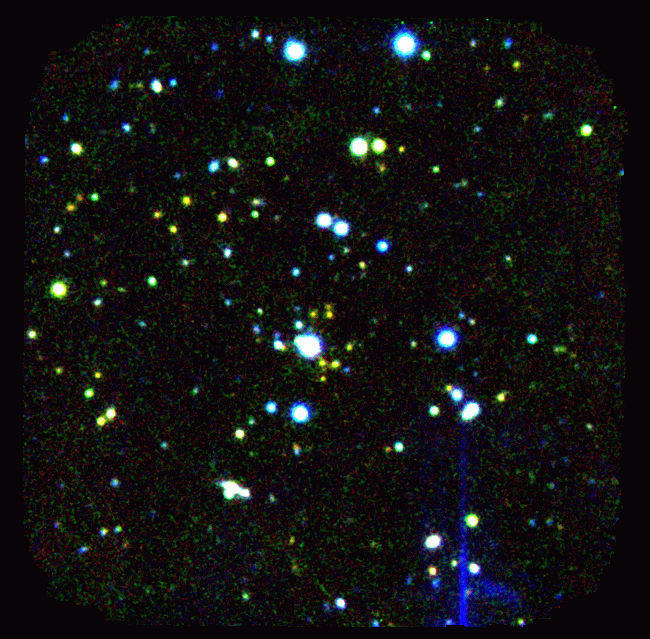
Color image of the field of Q0835+580 (z=1.534) using r, J, and Ks images to drive the blue, green and red color guns, respectively. The saturation level in each filter is 8 times the iterative image RMS so as to emphasize the faintest galaxies. North is up and East is left; the area in black is approximately 3.25' by 3.25'.
Q1126+101 Field rJKs Faint Color Image
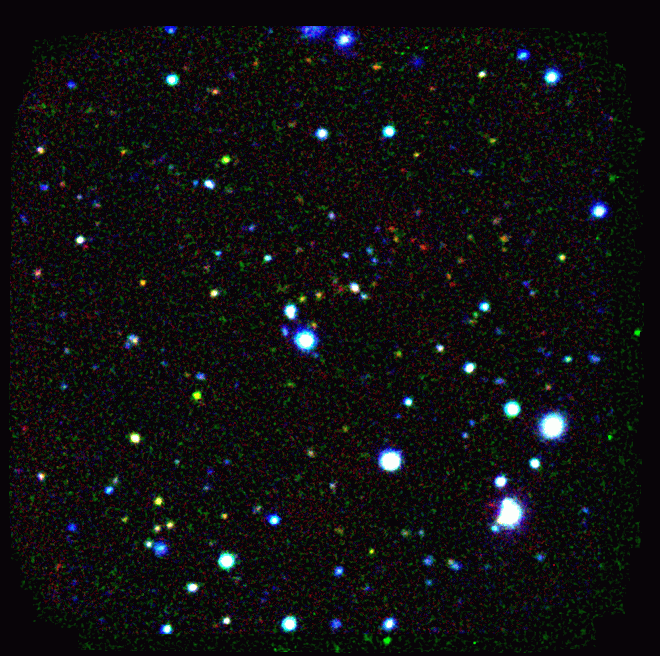
Color image of the field of Q1126+101 (z=1.516). See key to color picture of Q0835+580 for details. The area in black is approximately 3.3' by 3.3'.
Q2345+061 Field rJKs Faint Color Image
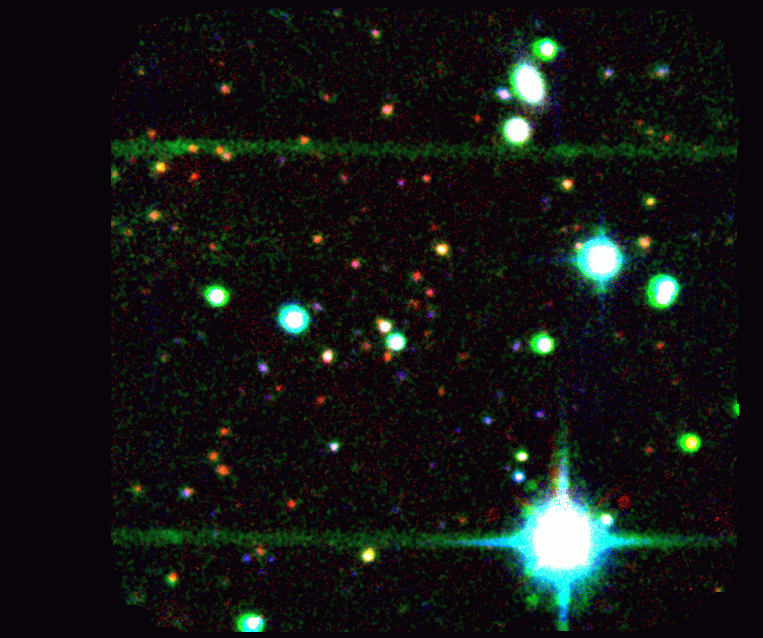
Color image of the field of Q2345+061 (z=1.540). See key to color picture of Q0835+580 for details. The area in black is approximately 3.8' by 3.2'. The J image of this field has 2.68" seeing and does not reach particularly deep, accounting for the different appearance of the colors in this picture compared to the previous two Figures.
Pat Hall -- Astronomer -- pathall[at]astro.princeton.edu